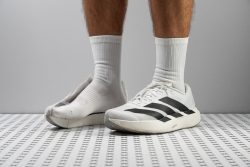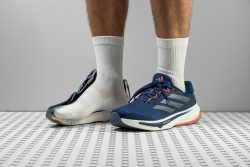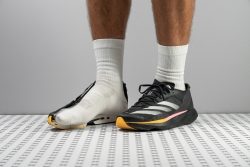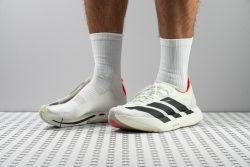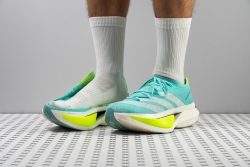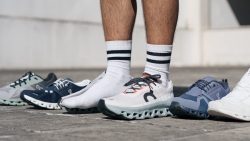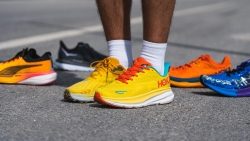7 Best Adidas Running Shoes in 2025
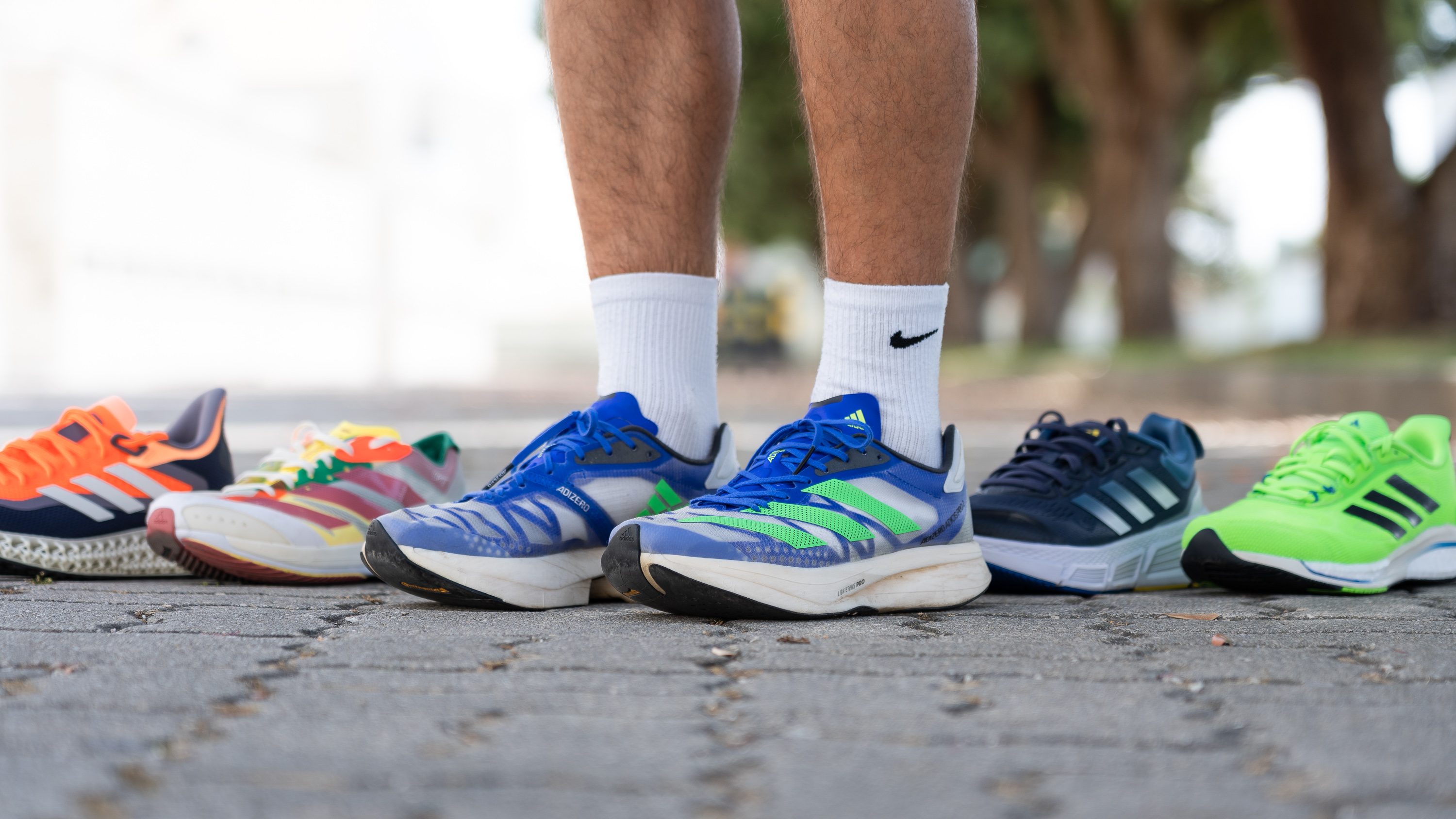
We buy shoes ourselves. We earn commissions when you buy through us, at no extra cost. Why trust us
Adidas is one of the top brands in the athletic gear scene and continues to be a popular choice for running shoes.
To help you navigate the brand’s extensive selection of running shoes, we have selected the best models in different categories. All the Adidas shoes we reviewed had gone through our lab and wear tests before we made them our best picks.
Do you want a stylish trainer to double for jogging and a fashion statement? Are you planning to hit a race and need a speedy horse? Or are you headed for the trails to crush the rocks and mud? We've got you covered.
How we test Adidas running shoes
We are a team of running shoe fanatics with an independent shoe-testing lab. After running with each pair, we spend hours testing the shoes in the lab and publish the written review along with all the lab data.
- Our inspection includes every imaginable aspect, from shoe flexibility and shock absorption tests to examining the upper under the microscope and destroying the upper with our Dremel.
- We even built a custom smoke machine to demonstrate each shoe’s breathability levels.
- We receive no free shoes from Adidas and purchase them at retail with our own funds. This applies to all shoes we test, not just Adidas, of course.
Best Adidas running shoes overall



































































What makes it the best?
The Adidas Adizero EVO SL offers unbelievable propulsion and grip for its £150 price. Our lab tests show it features premium features that explain its performance, like the 100% Lightstrike Pro midsole and the Continental rubber. It has a light and easygoing nature that makes it suitable across various paces and distances, making it our top Adidas running shoe.
The midsole felt well-cushioned and highly responsive. Our durometer confirms it’s a balanced 21.3 HA that performs magically on both fast and aerobic days. Even during LSD days, impact protection was delivered by the 36.1/28.1 mm stack.
For its height, the Adizero EVO SL is amazingly lightweight at 7.9 oz (223g), close to other racers. Its plateless design boosts comfort and versatility, as the midsole moves freely with our feet. Our bend test validates it’s 31.9% more flexible than average.
The outsole features the grippy Continental rubber in the forefoot, evidenced by its low 59.5 HC durometer rating, and two Clear Rubber patches in the heel for better durability. True enough, despite its soft 57.1 HC rubber, our Dremel only damaged the heel by 0.6 mm vs. the 1.0 mm average. Because of its razor-thin 1.6 mm outsole, we enjoyed the responsive midsole more vividly.
However, its streamlined design makes it less supportive. We recommend even those with mild stability needs to check other options.
Pros
- 100% Lightstrike Pro superfoam
- Exceptional value-to-performance ratio
- Low weight
- Ultra-breathable upper
- Unmatched versatility
- Agile and fun ride
- Handles short and long runs with ease
- Striking Evo 1-inspired aesthetics
- Striking Evo 1-inspired aesthetics
Cons
- Poor-quality laces
- Short, non-gusseted tongue
- Toebox durability
Best Adidas daily running shoes
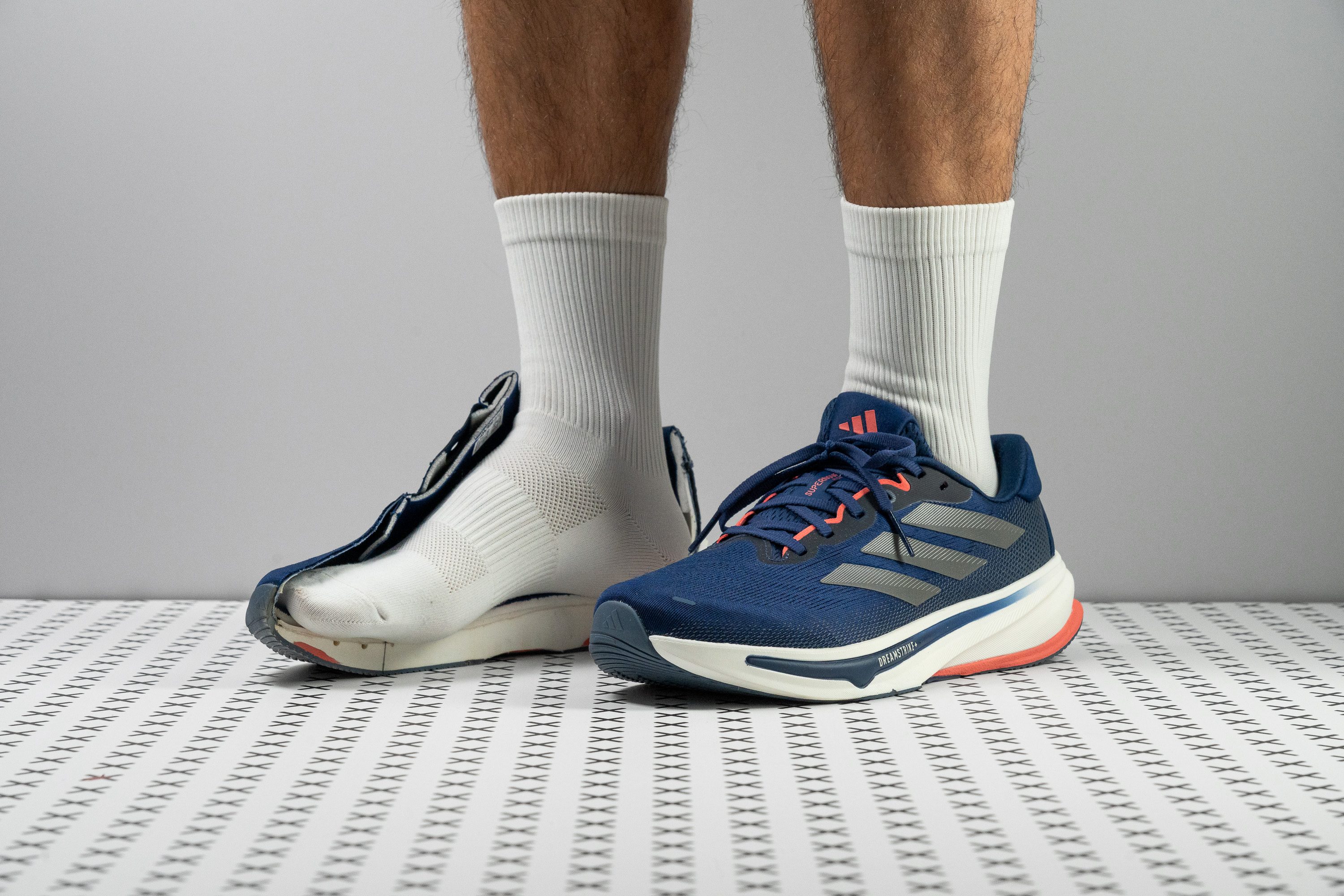

















































What makes it the best?
In the Supernova Rise 2, our lab results validate that comfort takes centre stage, supporting our feet with ample cushioning and ventilation. Plus, it delivers such a light yet stable ride in our runs, earning the top spot as Adidas' best daily trainer.
Mile after mile, the cushioning consistently delivers a balanced ride. While not the tallest, its 33.5 mm heel dampens impact and gives comfort for long runs. Our durometer reveals a reading of 21.0 HA, at par with the average, which feels soft yet not overly plush.
The platform is protected by Support Rods underneath, to further enhance stability. Together with the sidewalls that wrap the heel, it’s easy for us to find our footing and avoid wobbly landings. Amazingly, it even maintains a low weight of 9.1 oz (257g)!
The upper’s design includes abundant ventilation holes, which keep our feet fresh and free from hotspots. Serving their purpose, the shoe earned a remarkable 4/5 rating in our breathability tests, perfect for all-day wear.
However, the big toe area runs narrow so we can’t recommend this to those with high-volume or square-shaped feet.
Pros
- Lighter than version 1
- Comfortable yet breathable upper
- Cold-proof PEBA midsole
- Stable ride with Support Rods
- Reflective accents for night visibility
- Maintains competitive price tag
- Responsive Dreamstrike+ foam
- Flexible, natural running experience
- Great for walking
Cons
- Outsole lacks Continental
- Not cushioned for forefoot strikers
- Still lacks a gusseted tongue
Best Adidas shoes for tempo workouts
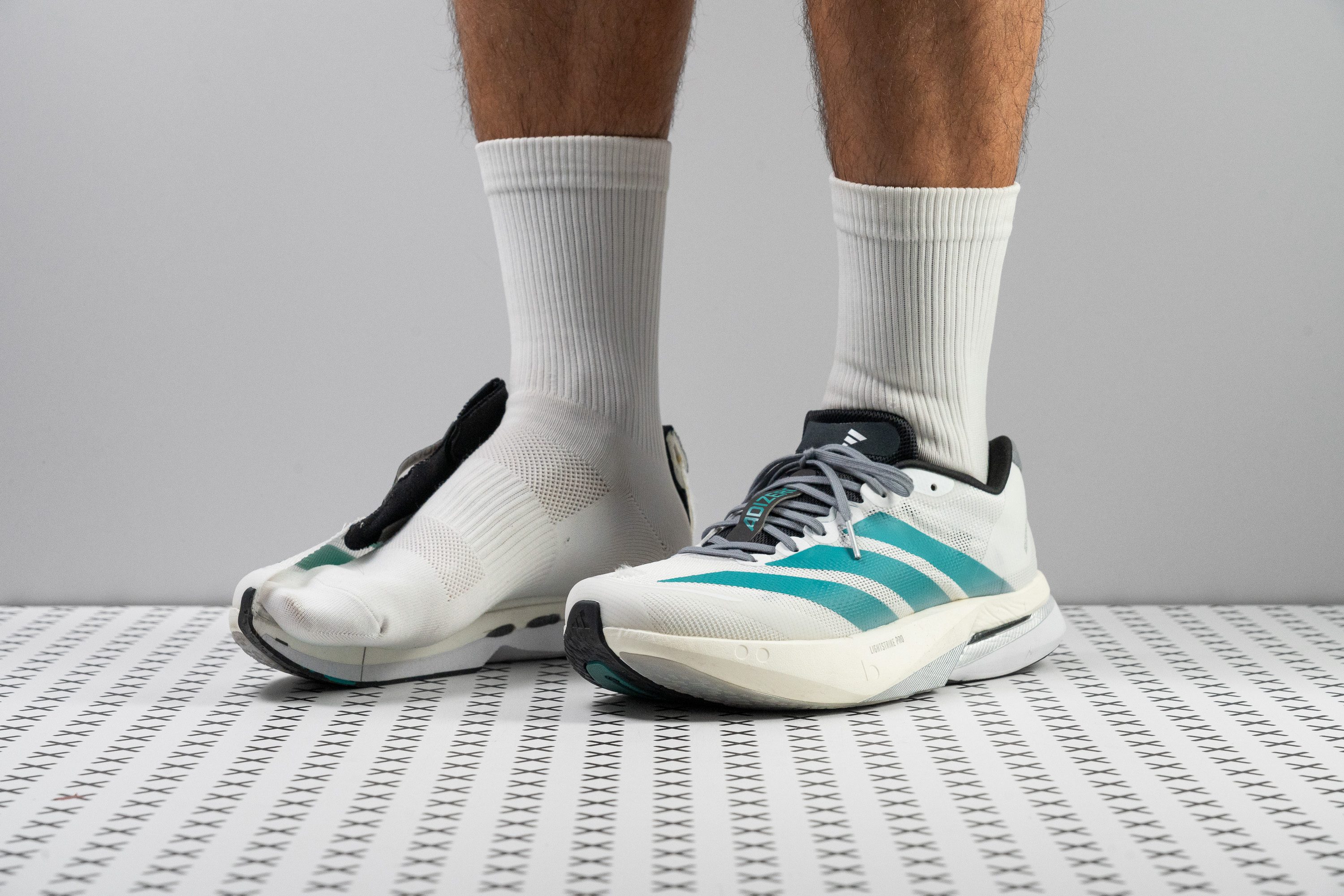

















































What makes it the best?
With its electric persona and lightweight sensation that impressed us in our wear tests, we crowned the Adizero Boston 13 as our top tempo Adidas running shoe. Further lab tests reveal it features the elite Lightstrike Pro midsole and the Energy Rods 2.0, which both bring a responsive ride without sacrificing comfort.
Starting with the cushioning, we observed a dual-density layer that reaches 34.3/28.3 mm. The forefoot runs taller than average, offering excellent impact absorption with a high 108 SA score for mid and forefoot strikers tackling long runs. The top foam is a soft yet bouncy 14.5 HA Lightstrike Pro, while the base layer is a firmer 23.0 HA for stability and durability.
In the heart of the midsole lies the Energy Rods 2.0. These act as a “carbon plate,” offering maximum power and speed without losing support. It works together with the elite foam that offers a massive 63.4% energy return, offering a responsive and dynamic ride.
Its effortless sensation is highlighted by its low 9.0 oz (254g) weight. For the cushioning it offers, its below-average figure impressed us and allowed us to pick up the pace with less effort.
However, the toebox tapers aggressively, so we can’t recommend this pair to those with wide feet. Those who need extra space should opt for a shoe with a roomier fit or a stretchier upper.
Pros
- Keeps losing weight
- Midfoot-friendly geometry
- More Lightstrike Pro!
- Breathable upper
- Redesigned heel counter improves lockdown
- Outsole grips well and lasts forever
- Stellar value for a supertrainer
- Ideal for tempo workouts
Cons
- Narrow heel limits stability
- Pointy toebox restricts toe splay
- Still too much Lightstrike 2.0?
Best Adidas running shoes for 5K/10K races
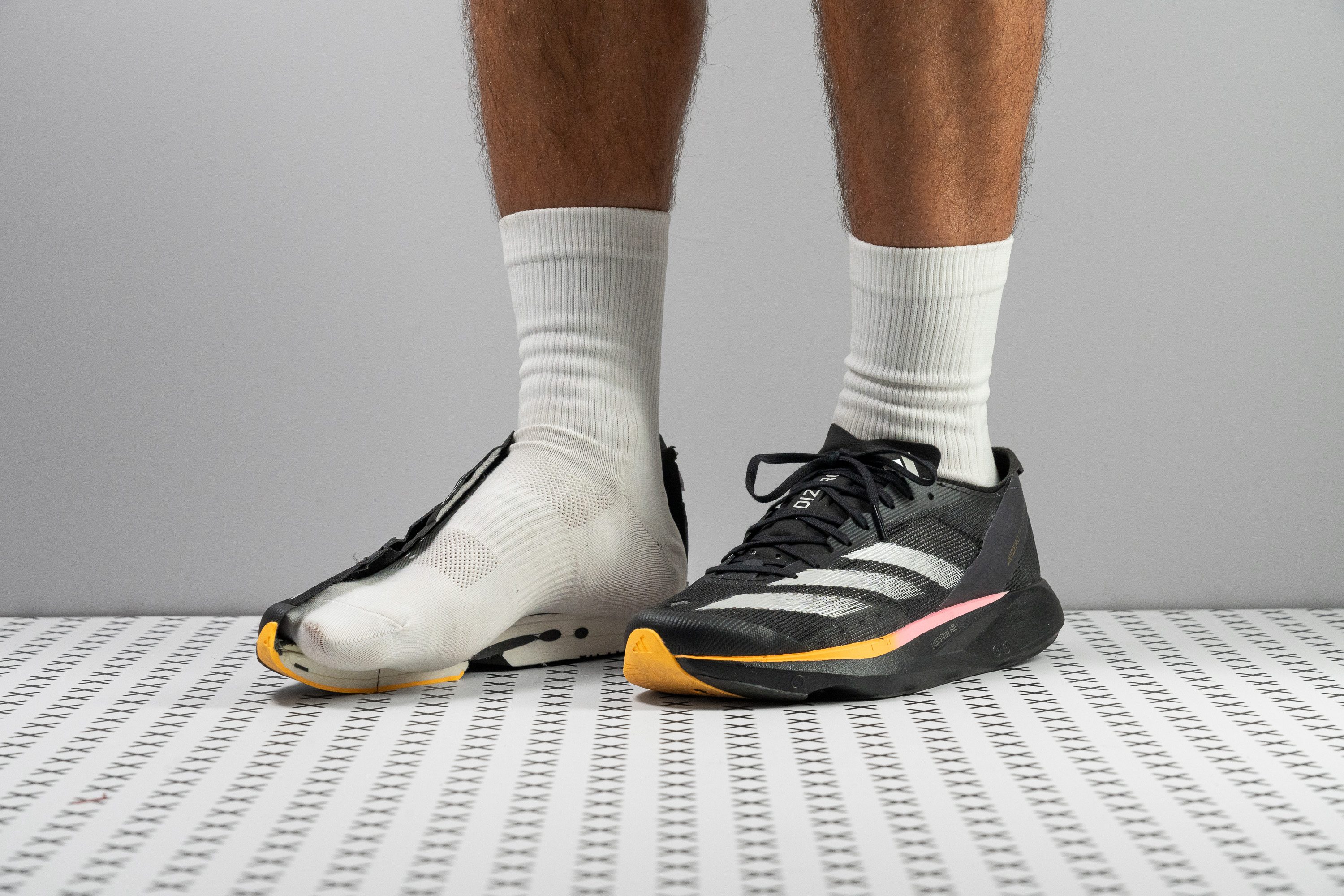




















































What makes it the best?
In our runs, the Adidas Adizero Takumi Sen 10 exhibited pure racer energy with its light build, insanely responsive midsole, and extra grippy Continental outsole. It’s designed around saving weight, satisfying our goal to shave off seconds from our PBs. Solid lab results make it our top Adidas shoe for 5-10K races.
TS10 feels undeniably featherweight and our scales confirm a mere 7.1 oz (200g), 32.0% lighter than the average Adidas shoe in our lab. For shorter races, every gramme counts and TS10 ensures we’re unburdened. Adding to its lightness is the seamless airflow, which our smoke test confirmed with a perfect breathability rating.
We’re reminded of TS10’s presence on foot through its massive energy return, propelling us forward effortlessly. Diving into the midsole, we discovered Energy Rods 2.0 nestled between two Lightstrike Pro foam layers—the top a plush 13.4 HA for comfort and the bottom a firmer 20.4 HA for stability. We found that the fibreglass rods aren’t as stiff as carbon-plated shoes.
Underfoot, the Continental rubber is aggressively grippy with a durometer reading 35.3% softer than average. We had no issues at all with traction on any surface, yet the soft and merely 1.8 mm thin rubber will disappoint runners who prioritise durability. Those who want long-lasting shoes should invest elsewhere.
Pros
- Lightweight
- Awesome for 5K/10K races
- Responsive Lightstrike Pro midsole
- Breathable engineered mesh
- Loves to go fast
- Awesome for track workouts
- Continental rubber
- Amazing at taking corners
- Recycled materials in the upper
Cons
- Not for heel strikers
- Durability concerns
- Extremely cramped fit
Best comfortable Adidas running shoes
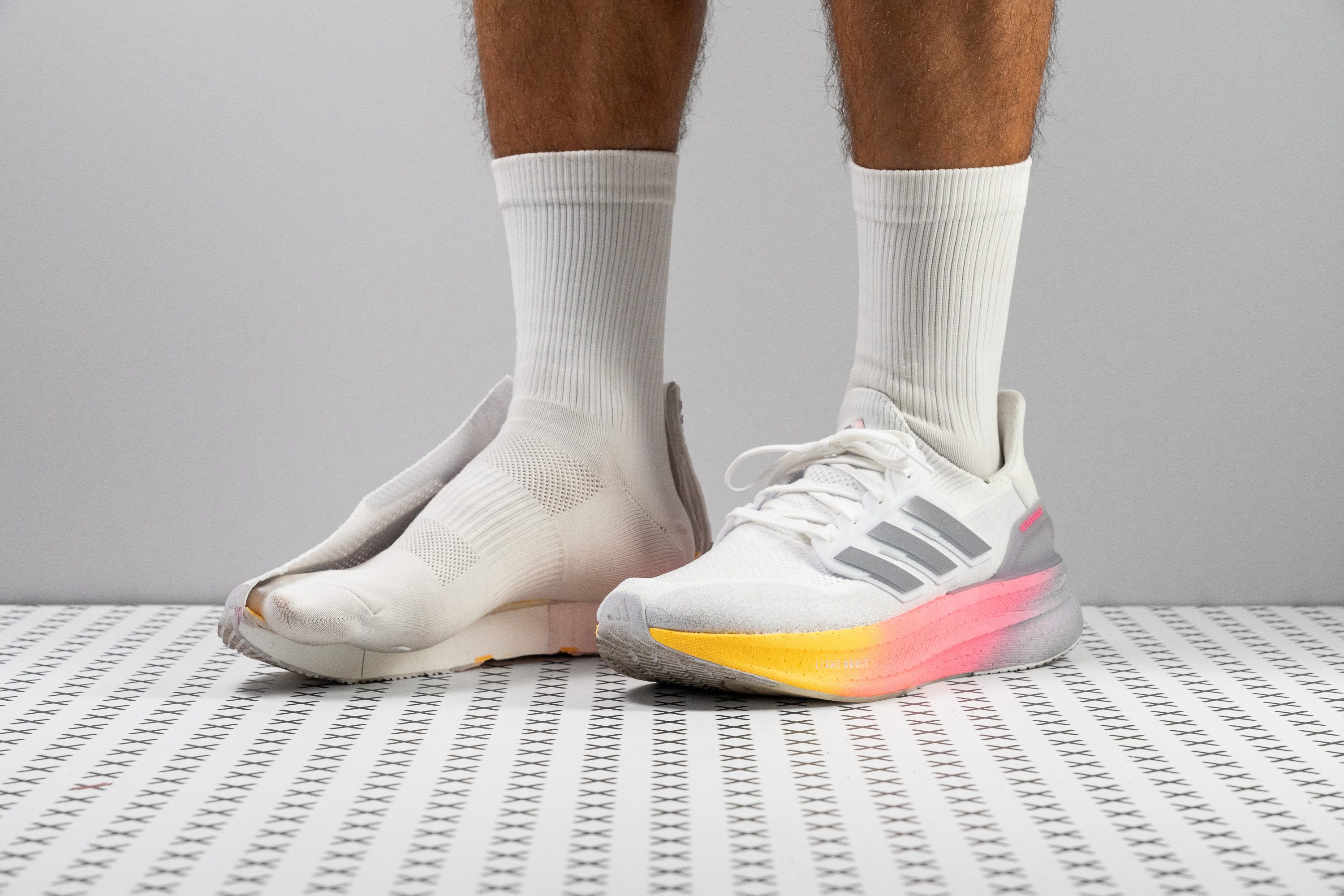





















































What makes it the best?
Our lab numbers show what we experienced in our runs: the Ultraboost 5 provides the best comfort among Adidas running shoes. From its gentle foam, breathable build, and spacious fit, comfort is at the forefront, and we found ourselves reaching for this pair for everyday wear. Plus, it includes the highly-rated Continental outsole!
The Light Boost foam felt pleasantly cushioned, backed up with high shock absorption levels of 126 SA in the heel and 112 SA in the forefoot. Besides the relief we received underfoot, Ultraboost 5 feels easy to wear because of its fluid midsole. Our bend test proves it’s 34.6% more flexible than the average running shoe.
The soft and stretchy Primeknit upper embraces the top of our foot, which adds to its spacious feel. Checking the toebox reveals it’s wider than average, notably in the 81.8 mm big toe area, accommodating even those with broad feet. The seamless airflow boosts comfort, evidenced by its perfect breathability score in our smoke test.
Underfoot, the Continental outsole displays reliable performance in terms of durability and grip. Despite measuring a soft 69.1 HC, it proved its resistance to wear in our Dremel test by showing an insignificant 0.8 mm dent.
Unfortunately, the midsole lacks responsiveness, and we find this shoe suits easy paces best.
Pros
- Enhanced midsole cushioning
- Roomy, comfortable knit upper
- Suitable for daily wear
- Excellent durability
- Optimised for heel strikers
- Superior Continental outsole
- More cushioned than ever before
- Can handle forefoot strikers
- Great for summer
Cons
- Could still be lighter
- Not suitable for fast paces
- Potential for heel slippage
Adidas running shoes with the best energy return






























































What makes it the best?
We experienced the best of both worlds in the Adizero Adios Pro 4! It ticks the boxes of a supershoe with its lightning speed, comfy ride, and airy nature, making it our ultimate Adidas running shoe with the best energy return.
Every stride feels powerful with the dynamic midsole and Energy Rods 2.0 that mimics our foot anatomy, providing resistance without being too stiff. We tested for the foam’s energy return and recorded a massive 80.3% in the forefoot, proving the consistent power we enjoyed.
It spoiled our legs with plush comfort so that we don’t tyre easily through its tall and shock-absorbing stack. The cushion feels delightful, reaching a massive 36.6/28.5 mm with high levels of impact protection in the heel and forefoot (142/117 SA) as per our lab test.
AP4 helped us fly to the finish line with less effort with its mere 7.1 oz (200g) weight, 24.5% lighter than average. It’s also less rigid than other carbon-plated shoes, needing only 22.7N of force to reach 30 degrees, enhancing an effortless sensation.
However, the midsole loses its magic after 100 miles because of its softer composition. If longevity is a priority, the previous version can deliver that.
Pros
- Softer, bouncier Lightstrike Pro foam
- Maintains the same price
- No more heel slippage
- Versatile from 5K to marathon distances
- Durable outsole with outstanding grip
- Fantastic for midfoot and forefoot strikers
- Improved for faster runners
- Comfortable, gusseted tongue
- Lighter than Adios Pro 3
Cons
- Unstable for every heel striker
- Narrow, tapered toebox
- Upper lacks breathability
- Midsole loses bounce quicker than AP3
Best Adidas super shoes
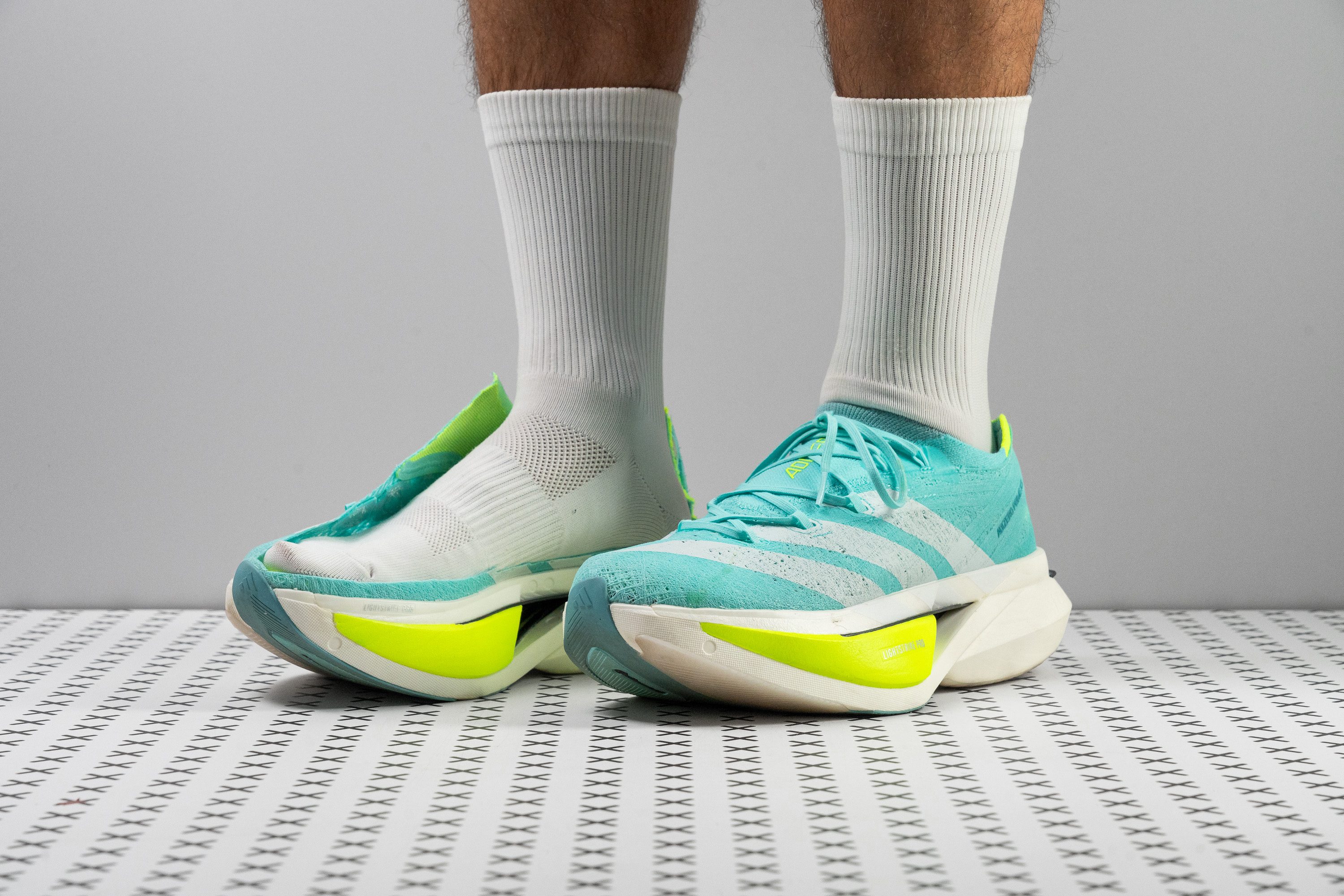





















































What makes it the best?
The Adidas Adizero Prime X3 Strung pushes the boundaries with its pace and its construction. Witnessing it surpass lab standards was a true pleasure as we discovered the makings of this masterpiece—featuring a colossal stack height, a smart plate design, and a reliably grippy outsole. Without a doubt, it’s Adidas’ prime super shoe.
On foot, we knew we had limitless cushioning beneath us that delivers a one-of-a-kind ride. Our calliper confirms a massive, race-illegal 48.1/35.1 mm, one of the tallest we’ve seen so far!
We had zero ground feel and infinite responsiveness. We measured its shock absorption, and the results are through the roof: 160/125 SA in the heel and forefoot, respectively. In terms of energy return, it continues to make our jaws drop with 73.7% in the heel and an even more responsive 76.7% in the forefoot!
Prime X3 features a full-length carbon plate and the Energy Rods 2.0 underneath. The ride feels highly springy yet also amazingly stable. Further enhancing solid surefootedness is the grippy outsole, proven by its impressive 0.56 friction score in our traction test.
While Prime X3 adds so many unique features, it also adds a lot of weight. At 10.8 oz (305g), it’s too heavy for racing.
Pros
- Excellent shock absorption
- Fantastic bounce from new Lightstrike Pro foam
- Fits better than v2
- Innovative tech and design from heel to toe
- STRUNG upper is just awesome
- Works well on any season
- Skyscraper-like stack height
- A total blast (if it suits you)
- Breathable upper
Cons
- Crazy expensive
- Heavier than all supershoes
- Heel strikers may feel unstable
- Too stiff for easy days
Comfort: How soft are Adidas running shoes?
The softness of the midsole depends on the type of foam used. And softness is usually the #1 thing correlated with comfort (although we'd like to add shock absorption here, so we do, a bit further down).
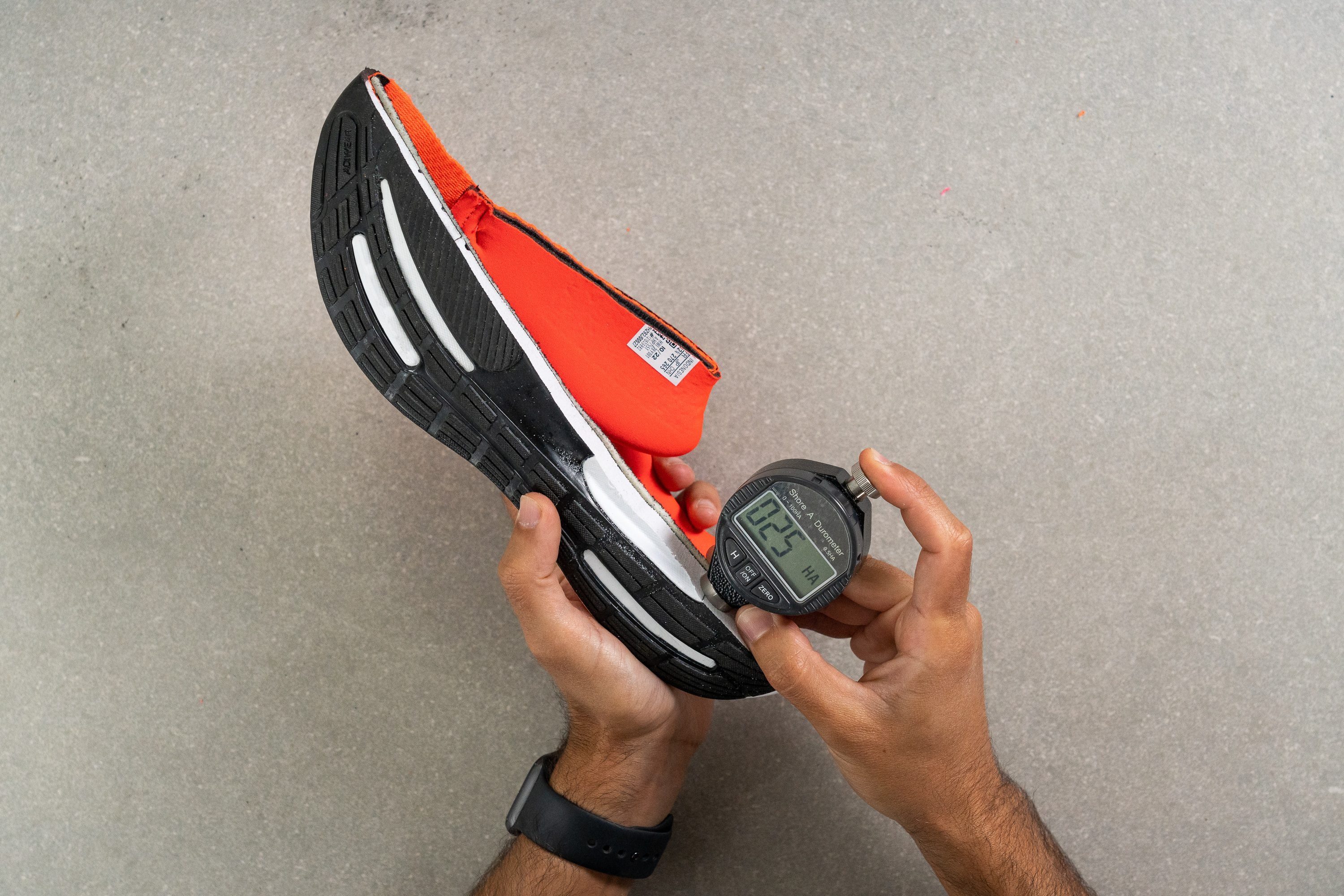
Lower numbers on the durometer indicate a softer foam, while firmer foams score higher.
Shock absorption of Adidas running shoes
Softness can be an indication of comfort but short-term only. This is because there are soft shoes with very low shock absorption and that means that the midsole is unable to efficiently dampen the impact forces when you hit the ground, which makes your legs and feet work more. The impact forces that the midsole does not handle (absorb) are sent to the legs, which may result in foot pain and/or fatigue. Premature, of course.
In the world of running shoes, we found the heel shock absorption above 110 SA to be moderate and above 130 SA high (great!). Of course, if you're a forefoot striker, you should look at the shock absorption at the forefoot as well!
Energy return of Adidas running shoes
Energy return is often looked at together with shock absorption, but it's important to emphasise that those 2 are not directly related. This means that there are running shoes with good shock absorption and bad energy return and vice versa.

We test energy return at the same time as shock absorption. To do this, we follow the ASTM F1976 13 methodology: we drop an 8.5kg mass from a height of 50 mm, with a total energy input of 5 J. We drop this on the heel area, exactly at the 12% and 75% of the inner shoe length. This is also where we measure the stack heights on shoes cut in half (according to the guidelines from WorldAthletics).
Energy return tells us how effective the midsole is at bouncing back after being squished at the landing. When we hit the ground, we put energy into the foam by compressing it. Some of that energy is lost as heat and deformation. The rest is stored, and it gets released when we lift the foot and the foam bounces back. All of this happens within milliseconds.
The higher the energy return in %, the springier (more responsive) the ride!
| Of course, not all runners need the highest numbers for energy return and shock absorption. Energy return is especially important in race shoes, while shock absorption should be prioritised on longer runs and by heavier runners. Daily trainers often have other priorities like durability, stability, or budget-friendliness, which is why they may not hit the sky-high numbers on these tests, and that's completely ok! |
We consider energy return above 65% high and moderate if it's in the 55-65% range.
Adidas foams explained
In the world of foams, we have standard foams and premium foams. Standard foams are cheaper, more durable and more stable than the premium foams. However, premium foams are way more responsive, leg-saving, good for winter as they do not firm up or stiffen up as much as standard foams.
As we’ve written in our Ultimate guide on running shoe foams, Adidas makes 4 popular standard foams and 1 premium foam. See their features below:
|
Foam |
Type |
Best thing |
Drawback |
|
Boost (TPU) |
Standard |
Comfortable |
Heavy |
|
Light Boost (TPU) |
Standard |
Weight |
Boring |
|
Lightstrike (EVA/TPU) |
Standard |
Stability |
Too firm |
|
Dreamstrike+ (Bio-based PEBA) |
Standard |
Versatile |
Weight |
|
Lightstrike Pro (TPEE) |
Premium |
Super-durable all-rounder |
Break-in needed |
Boost
Made in 2013, Adidas Boost felt out of this world, given its energy return that was higher than 75%. It was so much better than the EVA-based midsoles and it allowed quite a few long-distance world records to be broken. Today it is almost outdated. It is still comfortable but heavy, which is why a) we see it in trainers rather than in running shoes b) Adidas made a lighter version, Light Boost.
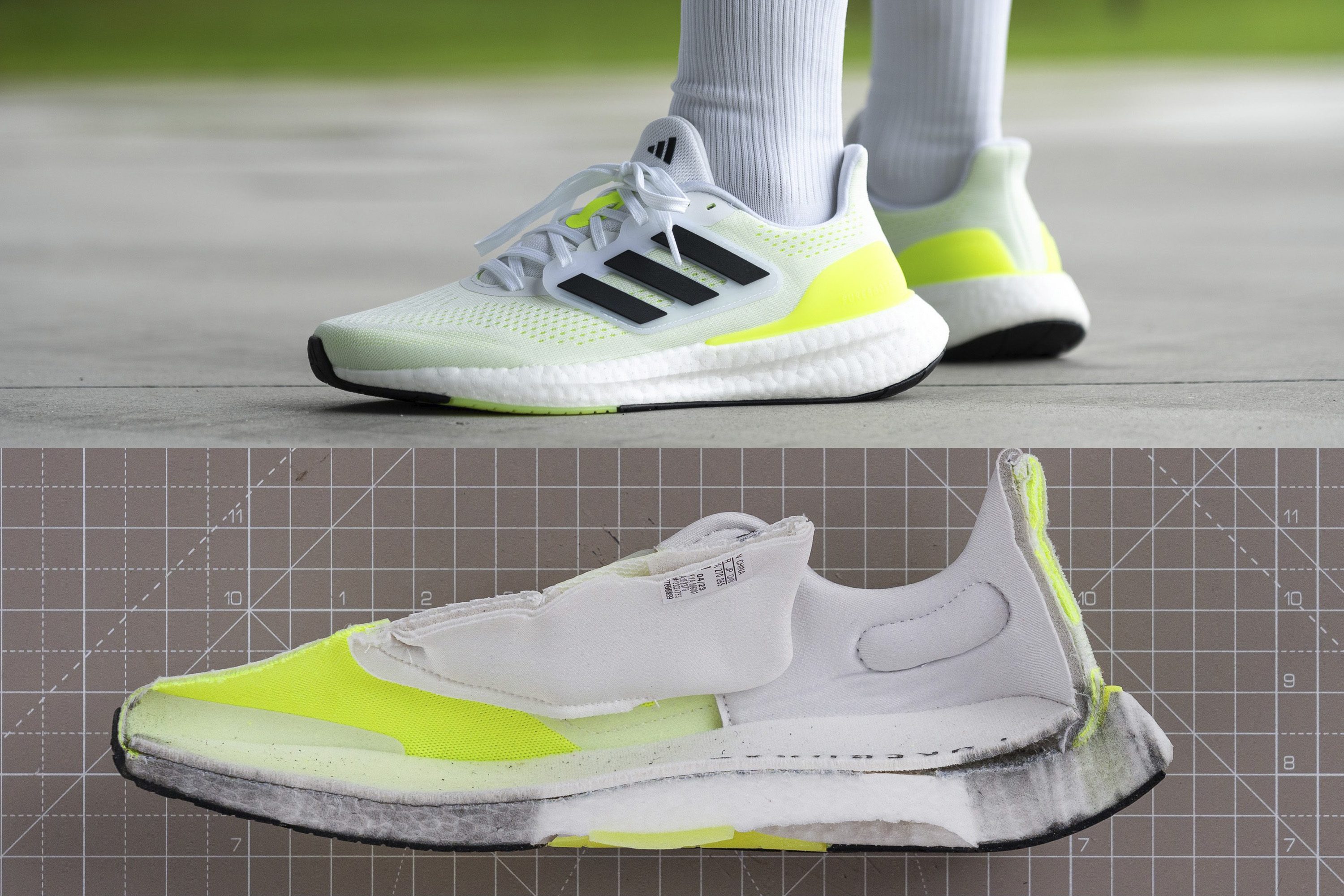
Light Boost
This foam came 10 years after the original Boost and it was worth the wait given that it weighs 30% less.
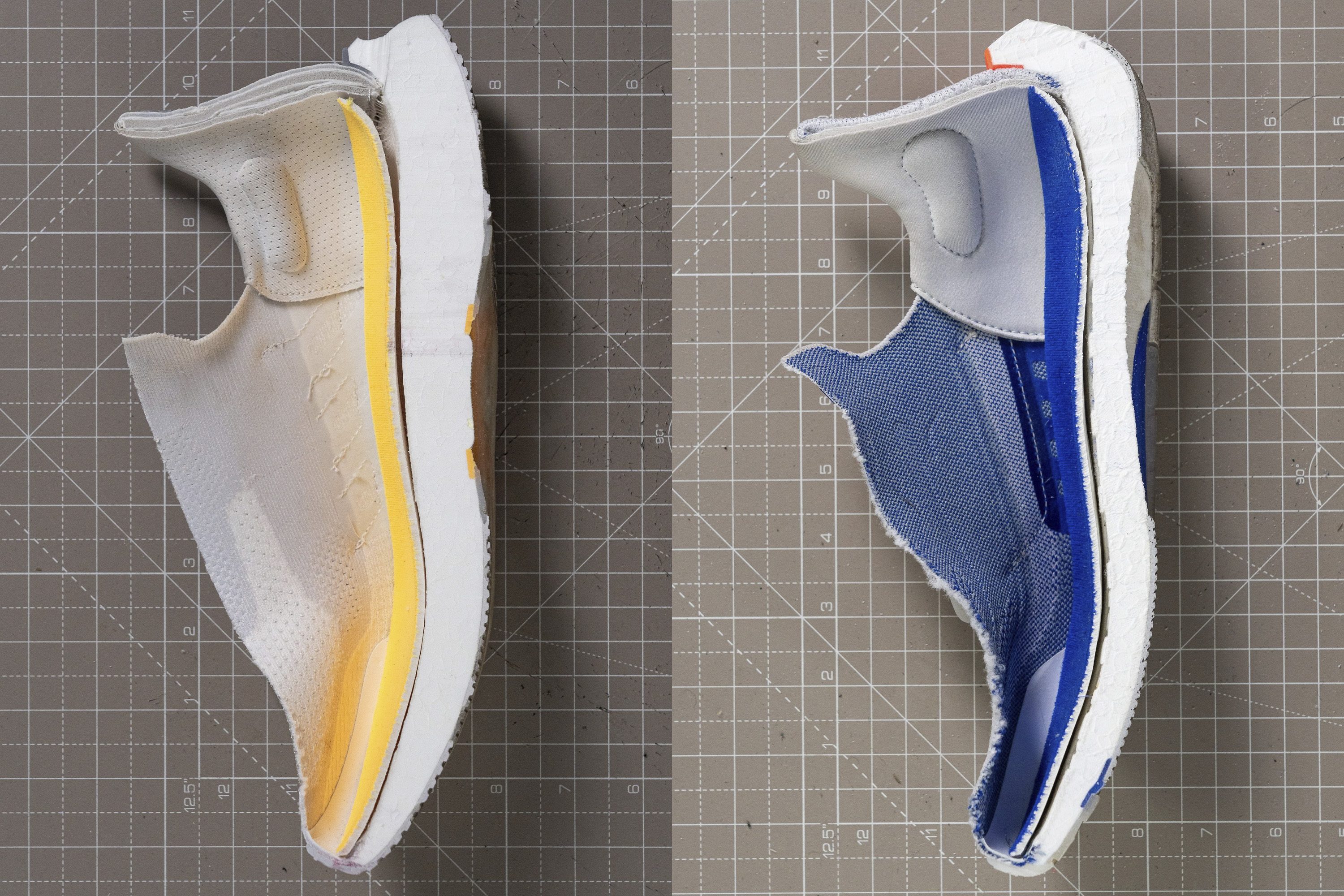
Lightstrike
Lightstrike went through some sort of a crisis, going from being fully TPU-based to EVA-based. You can find it labelled as Lightstrike (made from TPU), Lightstrike EVA, or Lightstrike 2.0 (which is also made from EVA). These 3 foams do not perform well and most runners have found them firm and definitely lacking the fun (pop).
Our field tests and lab tests have confirmed this, as we can see in the case of Adizero SL.
Dreamstrike+
Although still a standard foam, the Dreamstrike+ features 20% bio-based content and it’s slightly better than average standard foam, given that it has a reasonable energy return.
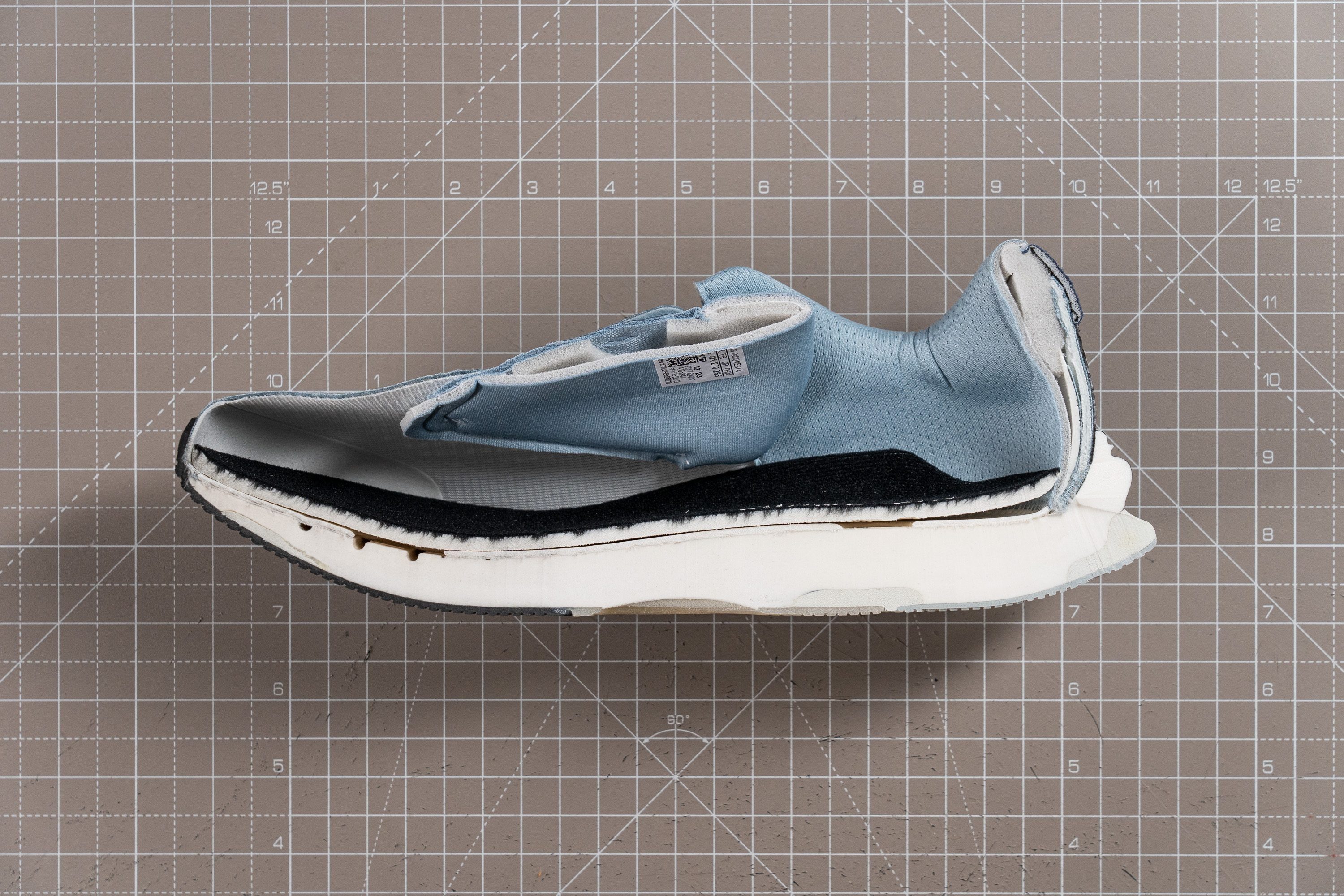
It’s made from PEBA but feels more like a TPU or supercritical EVA, given that the energy return is not that good.
Adidas Lightstrike Pro
Now this foam is just the opposite of the regular Lightstrike. It is AMAZING. We first saw this premium foam in the Adizero Adios Pro.
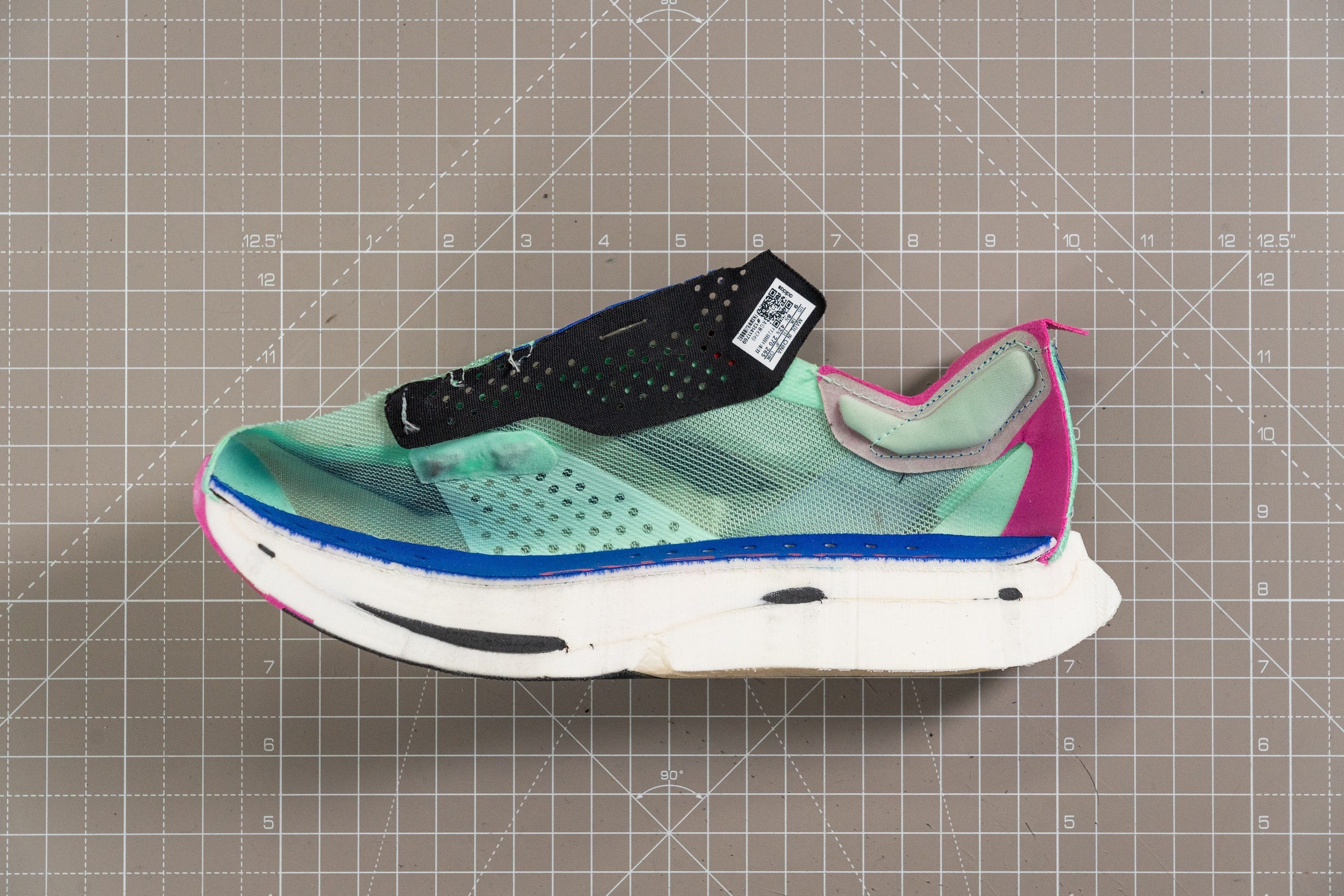
It’s made from TPEE (Thermoplastic Polyester Elastomer), which brings superb durability, the need for break-in, and a firmer ride when compared to other premium foams made from PEBA.
|
Shoes with Lightstrike Pro foam |
Most prominent features |
|
Perfect for long distances, stable |
|
|
Great responsiveness, stable at fast paces |
|
|
Superb stability, insane energy return, featherlight |
|
|
Very fast, responsive, lightweight; great for cornering |
Adidas Lightstrike Pro Evo
A variation of Lightstrike Pro is Lightstrike Pro Evo. It’s less dense and more lightweight. We saw it in the Adidas Adizero Adios Pro Evo 1 in 2023, which is actually 50g lighter than the Adios Pro 3, and that’s because the foam is made through a very expensive, supercritical process where first the foam blocks are made and then they are cut into exact shapes. This is a ground-breaking non-compression moulding process.
Adidas uppers explained
The 2 most common upper materials found in running shoes are knit and mesh. We wrote extensively about all sorts of uppers in our guide Running shoe upper: how to choose the best one for your needs but will cover the basics and Adidas uppers here.
|
Knit |
Mesh |
|
|
Pros |
Comfortable, hugs the feet, stretchy, great for wider feet, smaller chance of blisters |
Lightweight, breathable, durable, water-resistant or dries quickly |
|
Cons |
Warm, gets soaked easily and takes time to dry, heavier than mesh |
Has no give (it’s not stretchy or flexible), break-in could be needed |
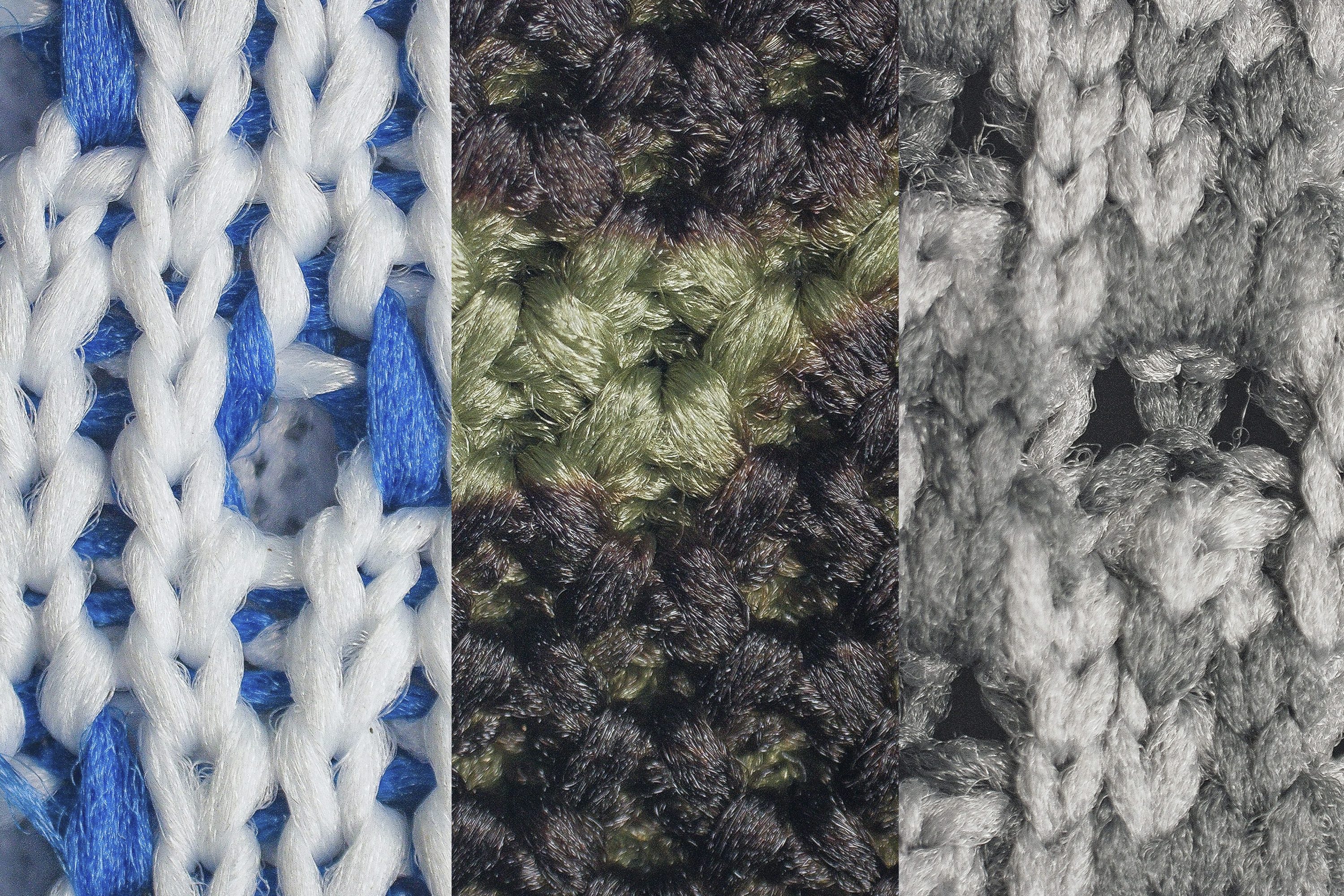
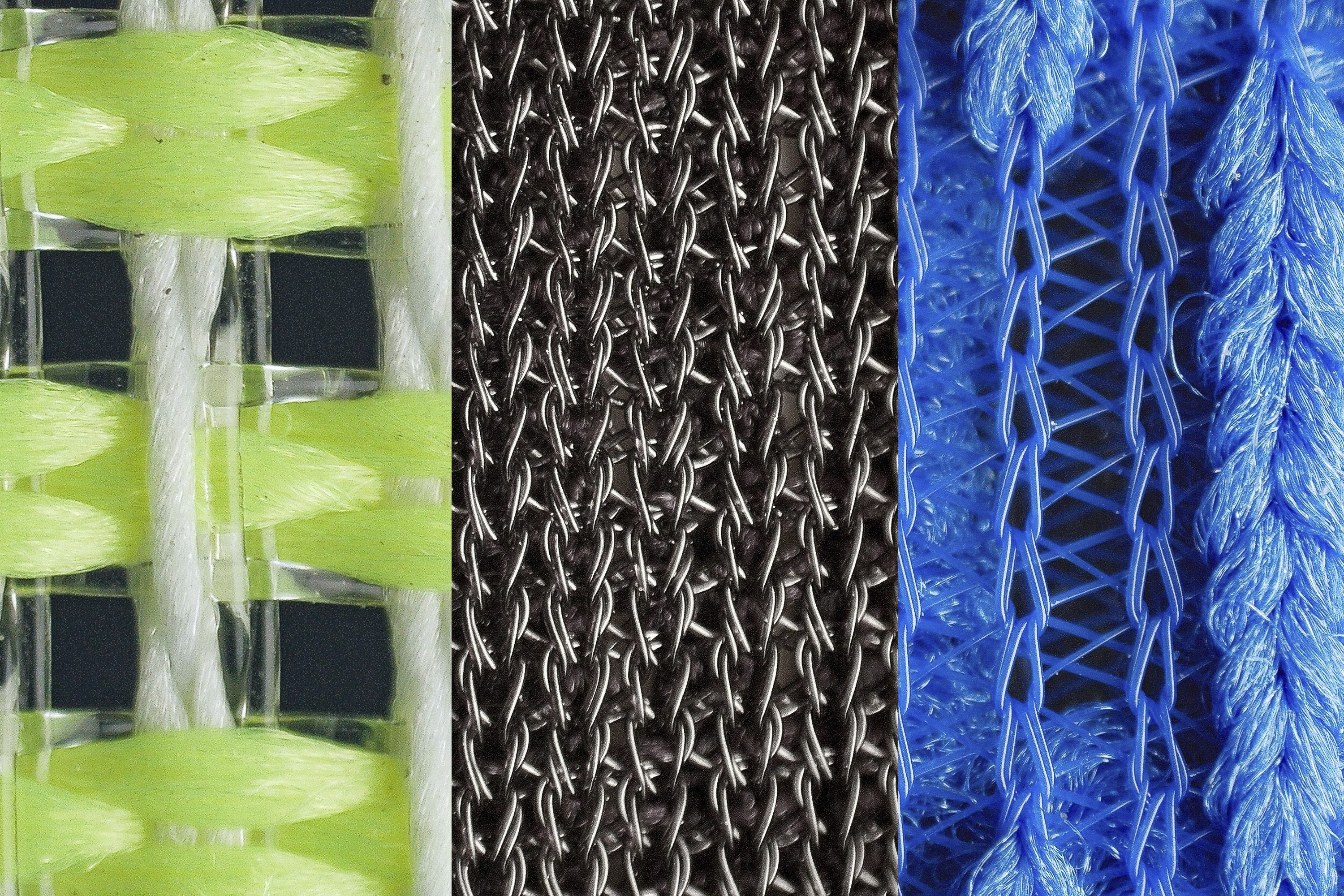
Our lab tests confirmed that knit uppers breathe worse than mesh uppers. We pump the smoke into the shoes and watch how fast it comes out and where exactly. Doing this allows us to assign a breathability score to each shoe: 1-5, where 1 is the least breathable (or the most cold-weather friendly).
The least breathable Adidas running shoes are not always knit and that’s because Adidas often doubles the mesh or combines it with other materials. This is clearly visible under the microscope in case you want to investigate it further (and look at our closeup pics).

As shown above, we also look at the upper under the microscope to examine and understand all the details related to breathability. It’s easy to see how knit uppers have looser and softer structures, while mesh uppers have tighter threads with (sometimes quite large) ventilation holes.
Strung: mesh upper
There’s a Strung robot that looks like an octopus, each leg holding a different material or tool and it makes the Strung upper.
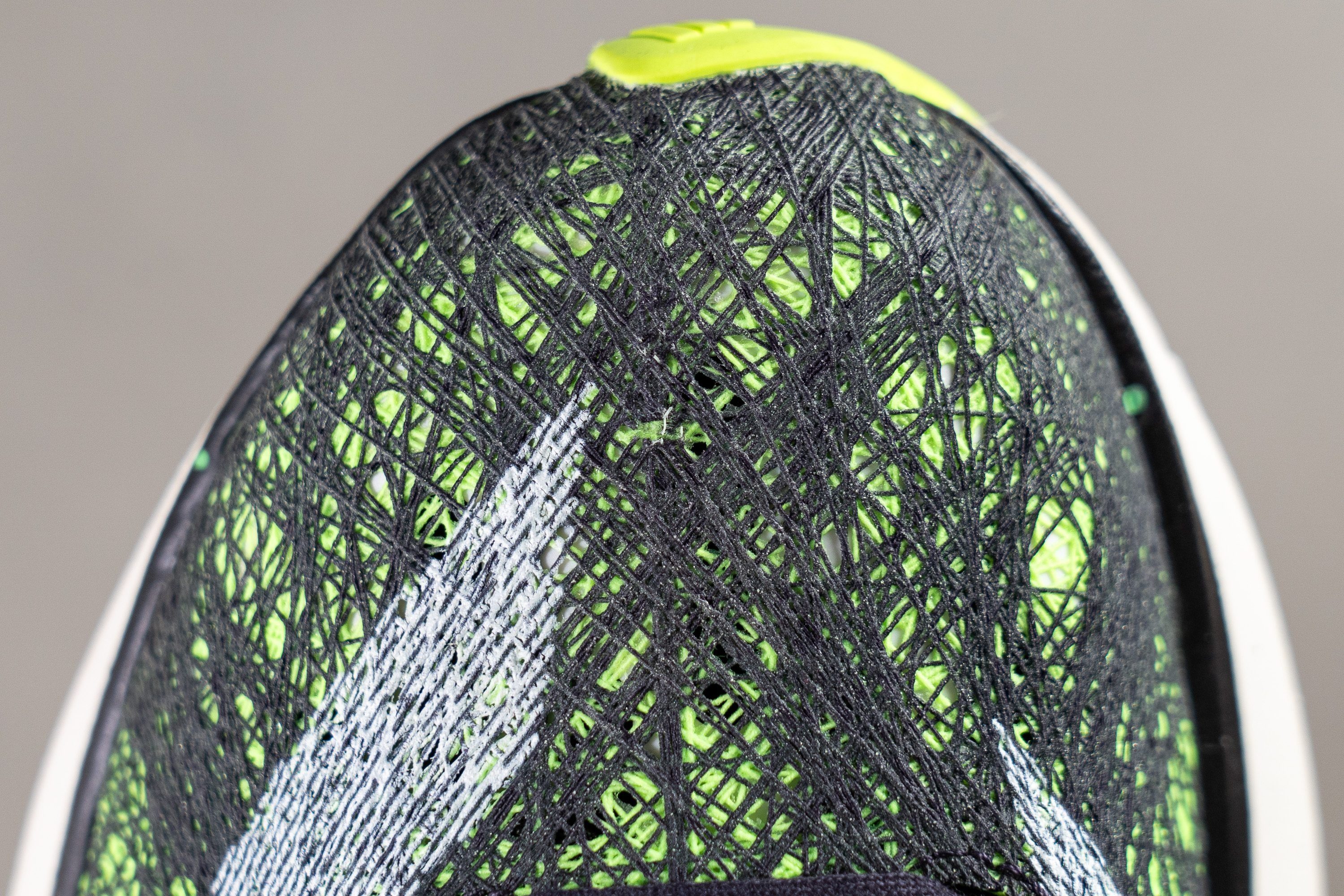
The robot can be given athletes’ feet data for a precise fit and there’s minimal excess material. Robot makes multiple threads in different directions until it achieves what Adidas calls a cocoon. It’s lightweight, breathable, and very comfortable.
Primeknit: knit upper
What makes this knit upper stick from the rest is the fact that it’s made as a whole piece. It’s not different pieces of material stitched together.

It’s made from fused yarn, which creates an ever-loved sock-like feel.
Weird-looking Adidas midsoles
The most unique-looking Adidas shoes are 4DFWD and Switch FWD.
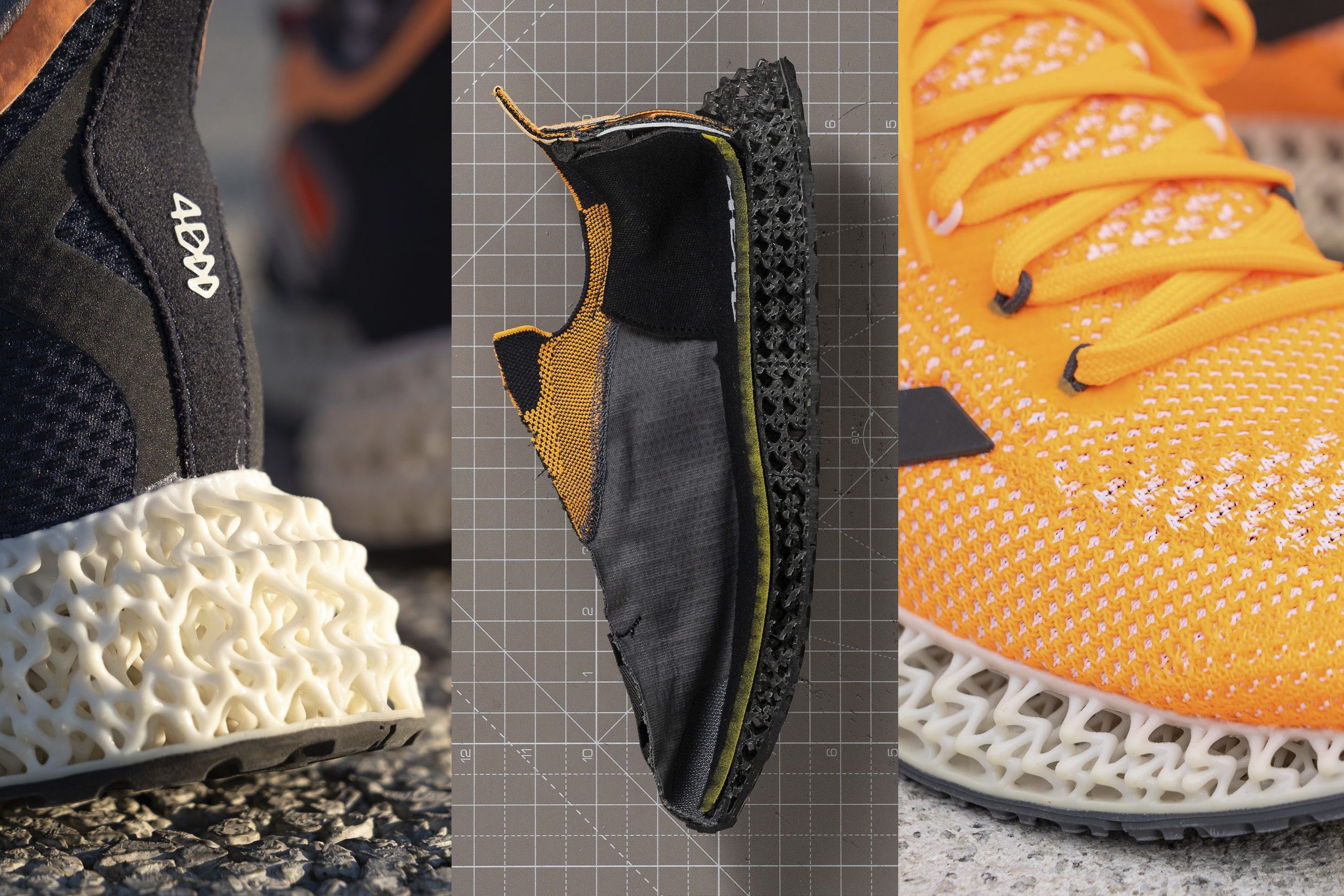
|
4DFWD midsoles pros |
4DFWD midsoles cons |
|
3d printed, 39% bio-based material, compliment magnet, 30mins to print a pair, can be fine-tuned |
Heavy, usually not for faster paces or longer distances, softness: balanced to firm (not soft) |
Another unique-looking midsole is found in Adidas Switch FWD. Like the 4DFWD midsole, this one is also heavy and good for daily runs only. Faster paces are a no. Additionally, debris gets stuck easily into the holes.
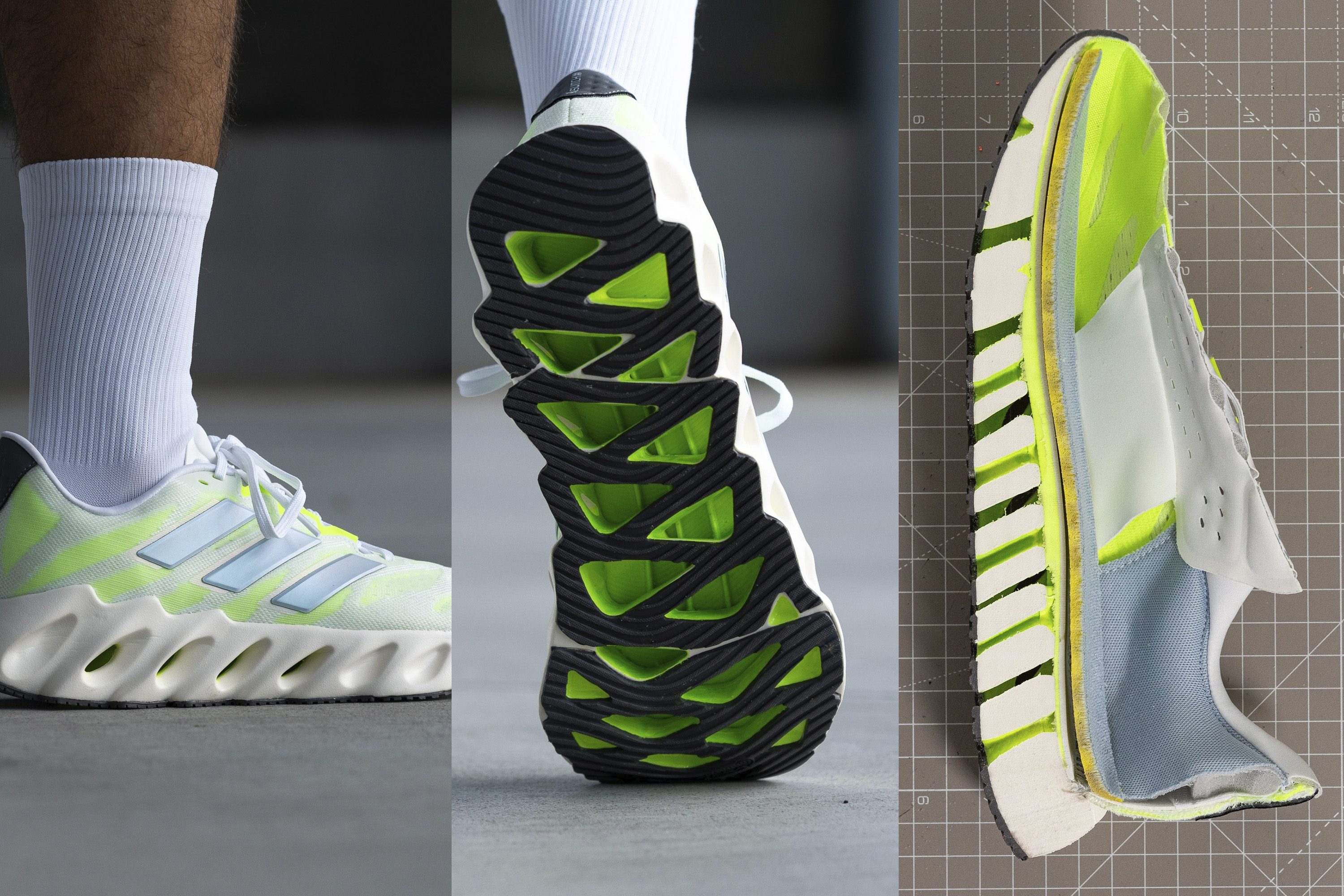
Switch FWD profile, cut in half, and bottom. There’s also non-full-length TPU plate (neon green/yellow) between the midsole and the lasting board that makes the shoe stiffer and more stable
On the plus side, this shoe is very stable and doubles as a great walking shoe.
Adidas and Continental: grip and durability
Adidas utilises 2 outsoles: Stretchweb and Continental. The latter is far more popular. When it comes to the grip in running shoes, you usually have to choose between superb grip and superb durability. This is because softer rubber is stickier but tends to wear faster, while harder rubber is more protective, and more durable, but can be bad in wet weather.
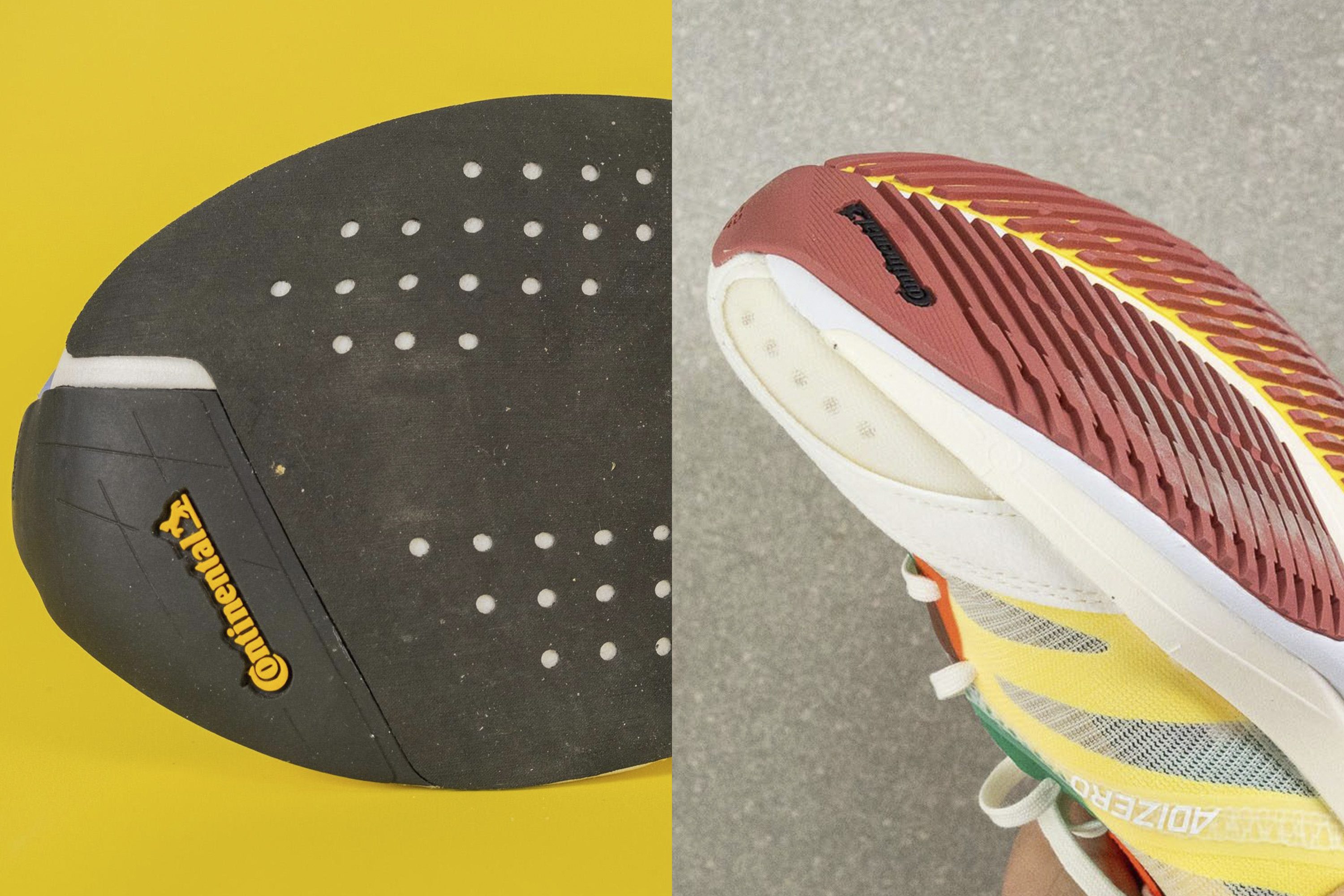
Grip also depends on the rubber coverage, the presence of threads and grooves, and whether the exposed midsole touches the ground (which significantly reduces traction).
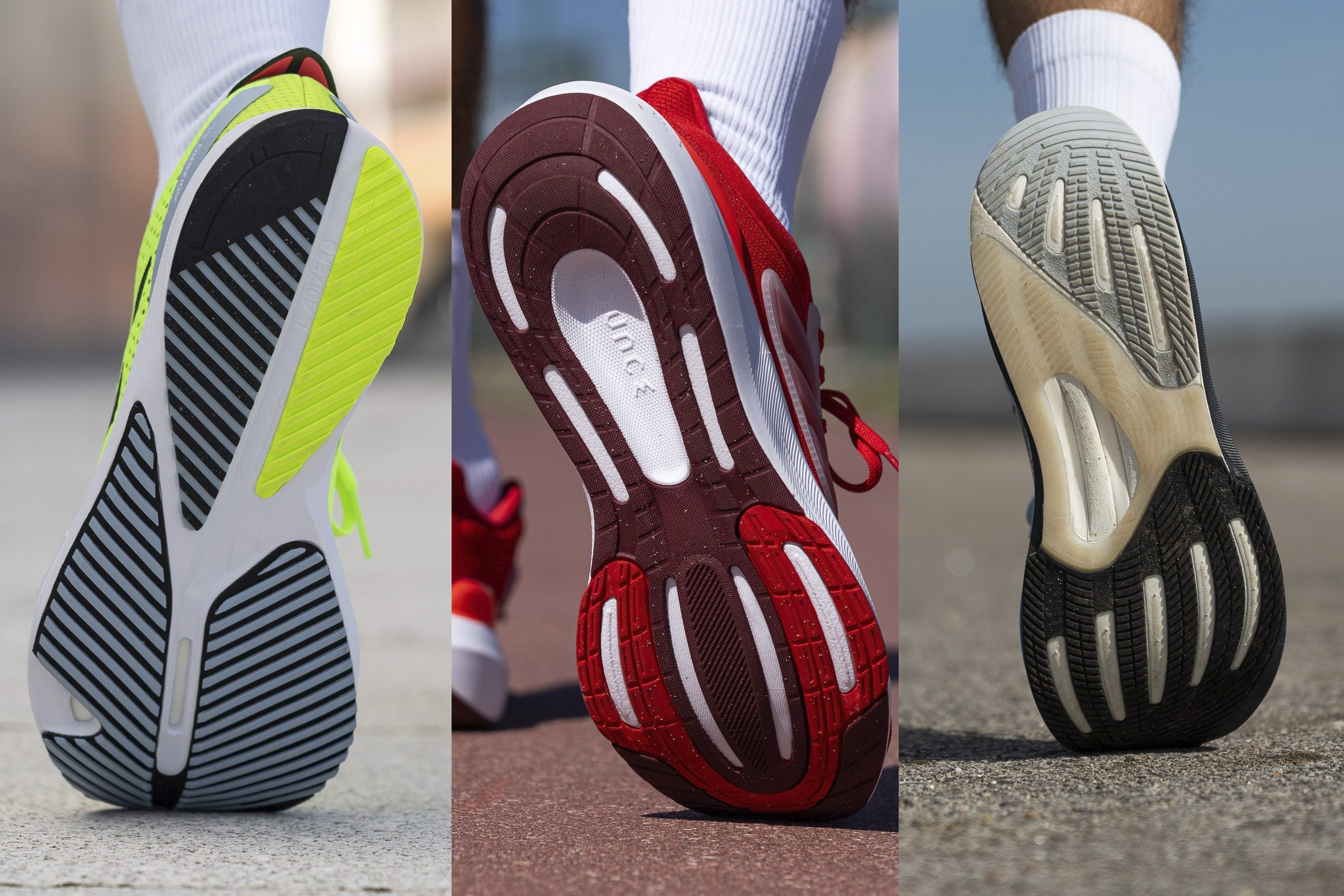
To measure the traction of Adidas running shoes, we use a specialised machine and follow the SATRA TM144 testing methodology.
The higher the traction numbers, the better. Actually, high traction (above 0.45) means that the shoe performs wonderfully both on wet and dry surfaces. Medium traction (0.25 - 0.45) is generally ok for dry ground surfaces but grip decreases on slippery ones.
And finally, the durability of the outsole. For this test we use a dremel to make the damage on the outsole - we have standardised this test which means we always use the same force, same RPM, and the same duration.
Once done, we measure the dent our dremel has made. We use a tyre tread gauge for this. The deeper the dent, the less durable the outsole and vice versa. We have discovered that the average dent depth for Adidas road shoes is 1.2mm, while the average dent depth for all running shoes we’ve tested is 0.9 mm.
Wide fit and wide toebox in Adidas running shoes
In case you’re worried about the fit of the Adidas shoe, you can look at our gel measurements. We measure the width of the shoe and the width of the toebox. This allows us to understand whether the toebox is pointy (tapers) or not.
To get the precise measurements, we fill the shoe with a liquid gel and then freeze them together. Once the gel has hardened, we can perform the measurements
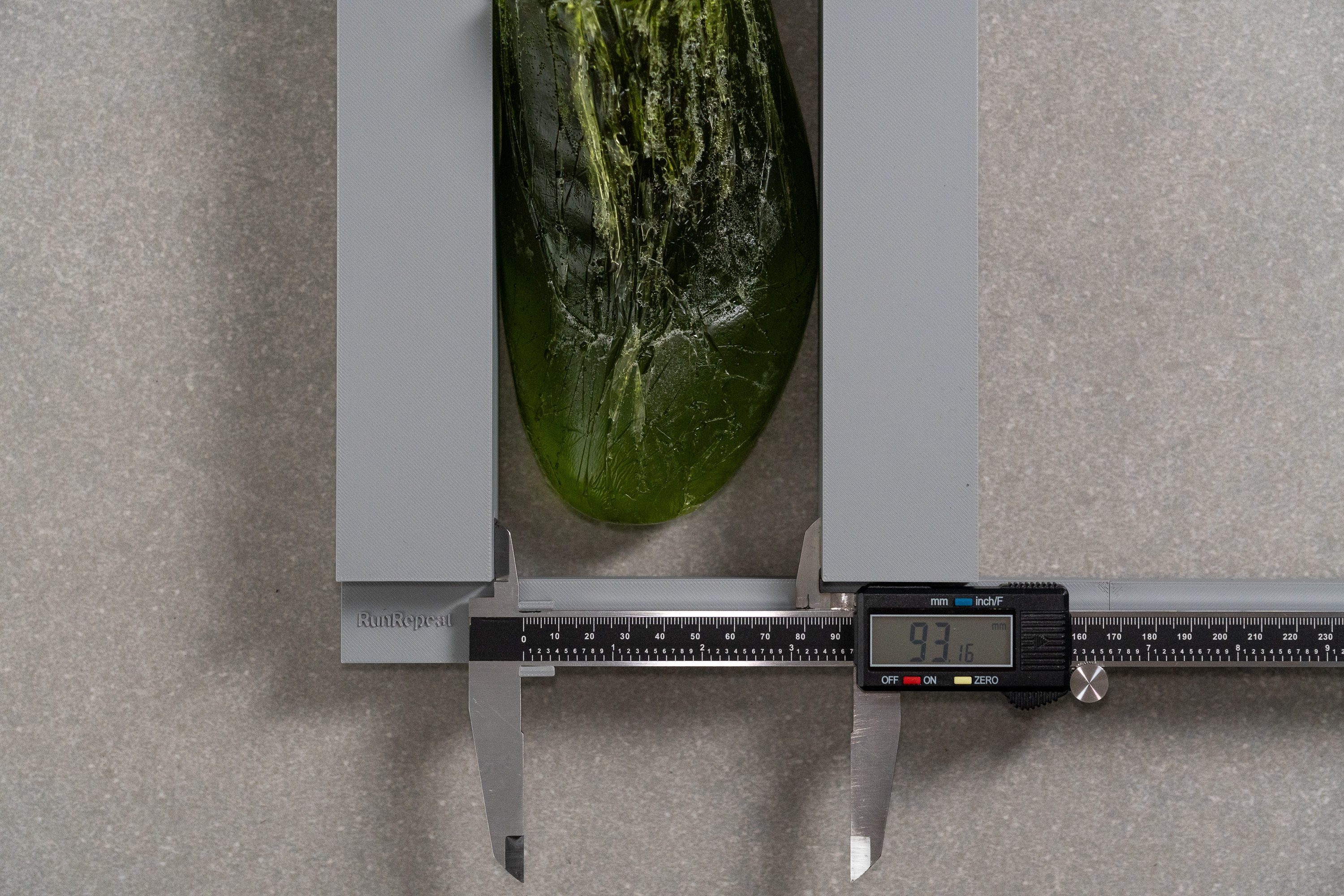
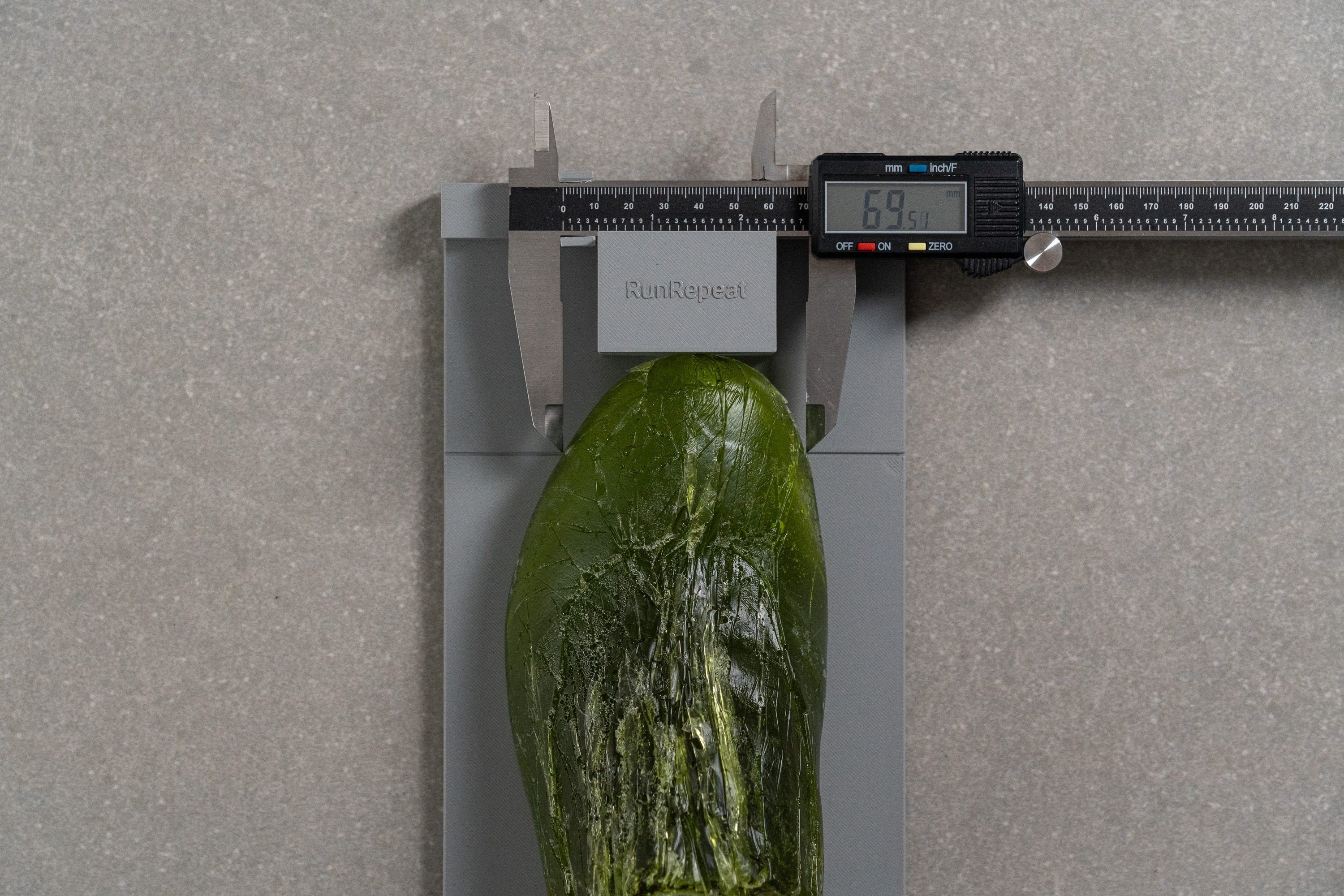
Having this gel mould that perfectly resembles Adidas running shoe interiors is great because we can also use it to measure the height of the toebox.
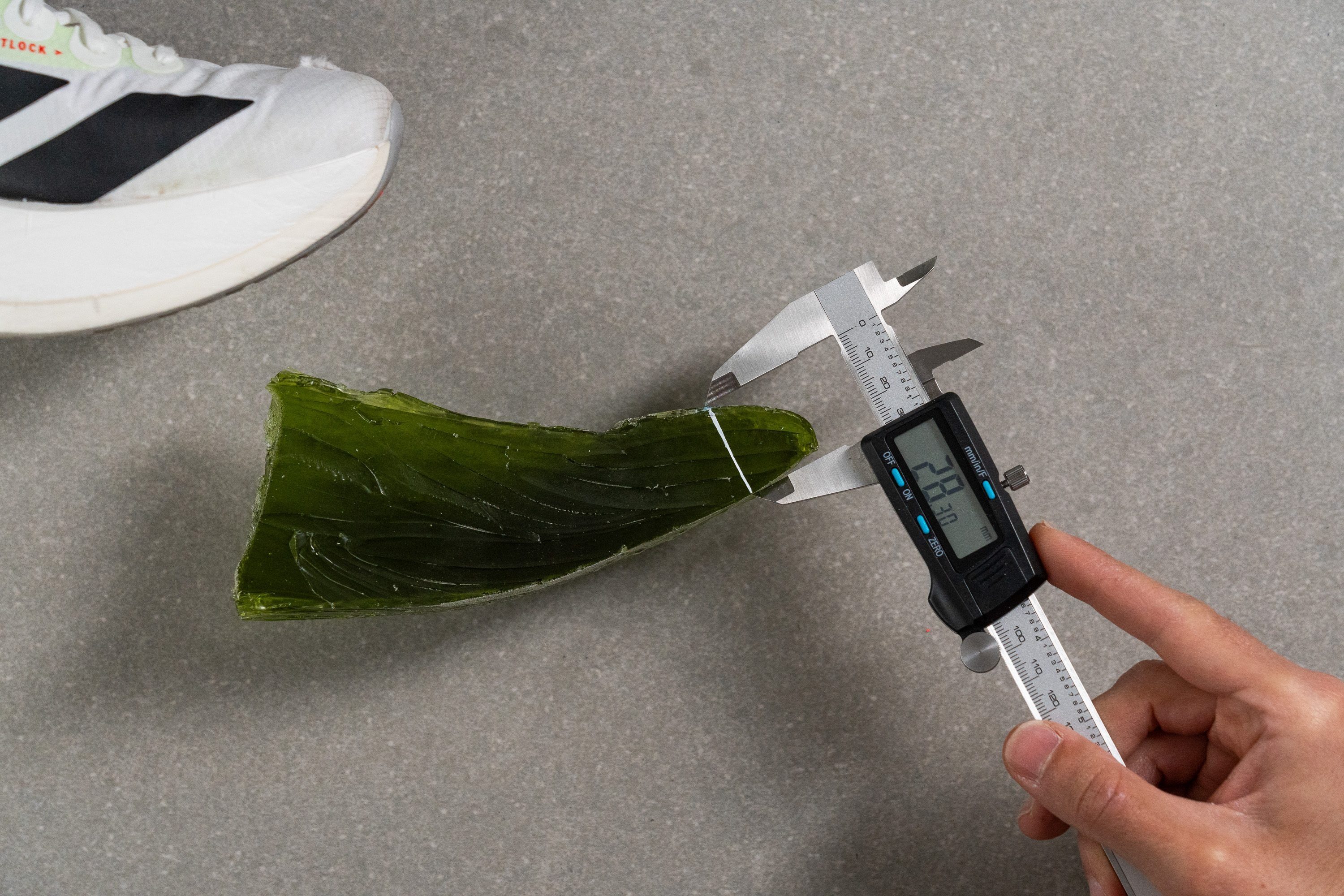
If you've experienced black toenails or uncomfortable pressure on the top of your toes, you most likely need more vertical room in the toebox.
Recognisable flap heel tab
Usually found in Adidas Adizero shoes, this flap heel tab has become quite recognisable in Adidas running shoes.
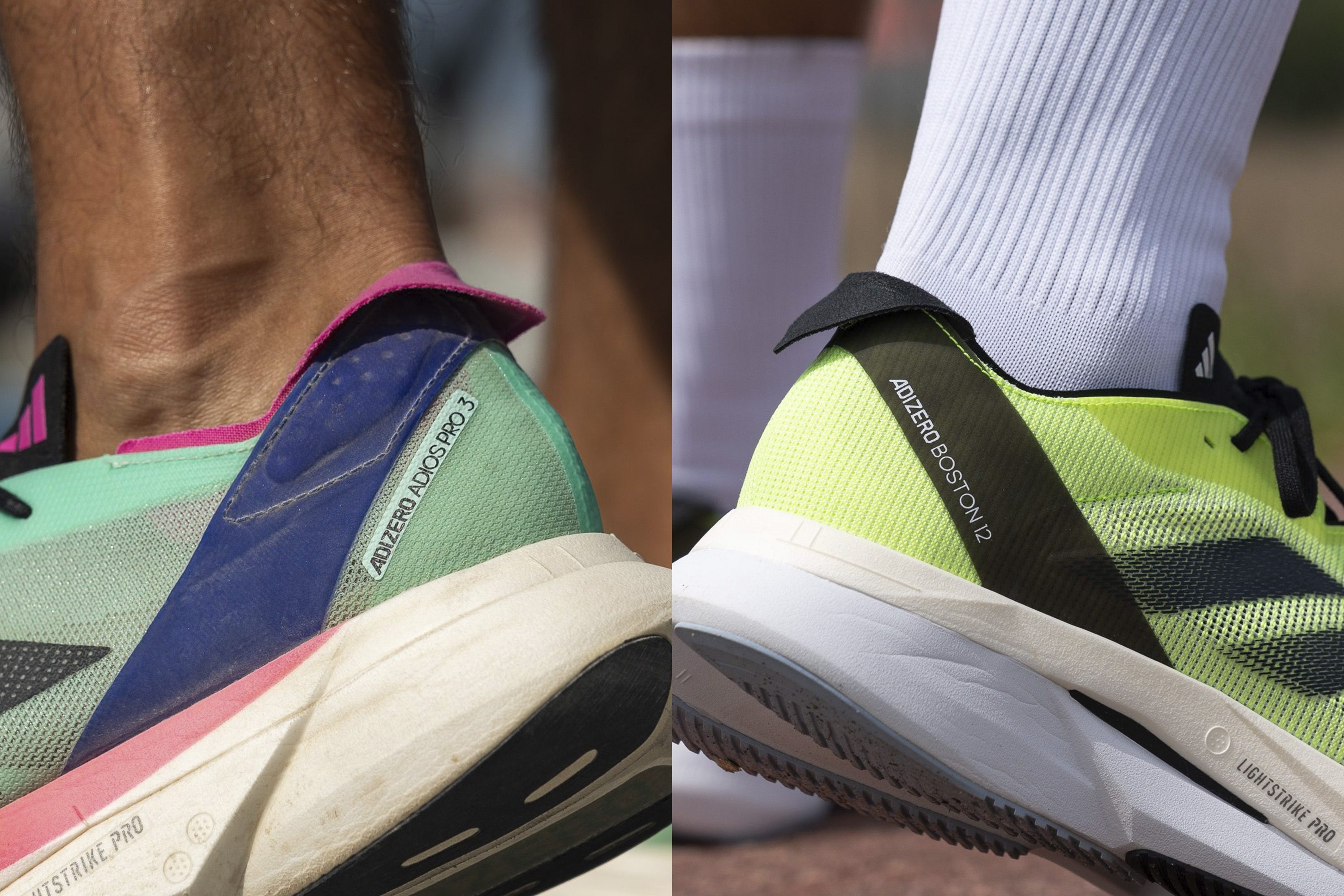
In the image above, we see the flap tab in Boston 12, and Adios Pro 3.
Eco-move: Adidas Parley
Adidas started collaborating with Parley for the Oceans in 2015. This was a big step in the right direction as Adidas, thanks to this initiative, started using polyester yarn made from plastic which was once coastal marine waste.

Parley utilises their network to clean the beaches and collect the plastic and then shred the plastic and rework it to become Parley Ocean Plastic. This is the material that Adidas uses to create x Parley products.
We can often see “Primeblue” in the description of Adidas products and it’s the high performance yarn made with Parley Ocean Plastic.

